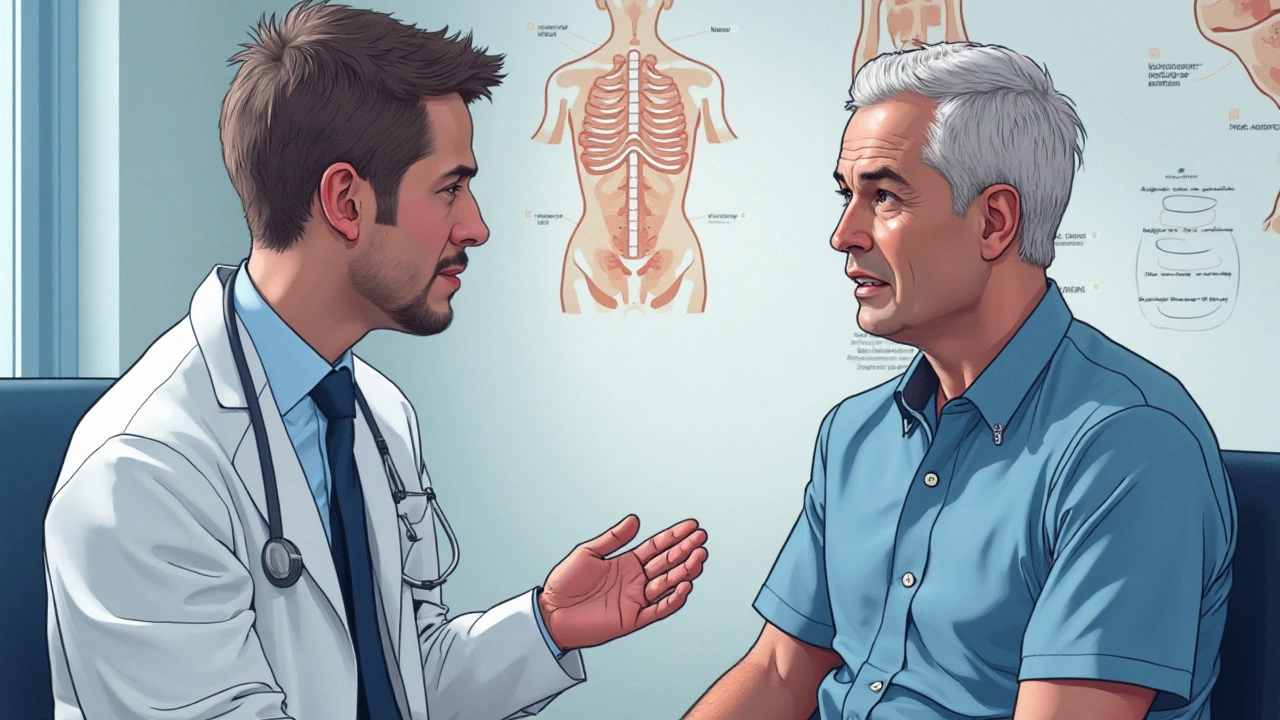Chronic Pain Relief: Everyday Strategies That Actually Work
If you’ve lived with chronic pain for months or years, you know how frustrating it can be to feel stuck. The good news? You don’t have to rely on one‑size‑fits‑all solutions. A mix of medication, movement, mind‑training, and smart doctor talks can cut the ache enough to get your life back. Below are the most useful, no‑fluff ideas that work for most people dealing with persistent pain.
Quick Wins You Can Try Today
Heat or cold, your call. A 15‑minute warm shower, a heating pad, or a cold pack can calm inflamed tissue in minutes. Switch it up – heat relaxes muscles, cold numbs nerve spikes.
Gentle movement beats bed rest. Even a short walk, gentle stretching, or a beginner’s yoga video can boost blood flow and release endorphins. Aim for 5‑10 minutes a few times a day; you’ll notice less stiffness.
Mind‑body tricks. Simple breathing exercises – inhale for 4 seconds, hold 4, exhale 4 – lower cortisol and make pain feel smaller. Apps that guide you through progressive muscle relaxation are free and easy to use.
OTC relief, used wisely. Ibuprofen or paracetamol can help, but don’t overdo them. Take the lowest effective dose and talk to a pharmacist if you need them for more than a week.
Check your posture. Slouching adds pressure to the spine and joints. Set a reminder to sit tall, keep screens at eye level, and use a small pillow to support your lower back when you’re seated.
Building a Long‑Term Pain Management Plan
Quick fixes are great, but lasting relief needs a roadmap. Start by writing down when the pain spikes, what you were doing, and how intense it felt. This “pain diary” helps you and your doctor spot patterns and adjust treatment.
Professional help matters. A physiotherapist can teach you targeted exercises that strengthen weak muscles and protect joints. If nerve pain is the main issue, a neurologist may suggest topical creams, anti‑seizure meds, or nerve‑blocks.
Medication isn’t the only tool. Stronger prescriptions, like low‑dose opioids, should be a last resort because of habit risk. Talk to your doctor about combining meds with non‑drug options – often the mix works better than any single approach.
Therapies that pay off. Cognitive‑behavioral therapy (CBT) teaches you how thoughts affect pain perception. Many people report a 20‑30% drop in pain after a few sessions. Acupuncture, massage, and TENS units also have solid evidence for specific conditions.
Lifestyle tweaks. Eat a balanced diet rich in omega‑3s (fish, walnuts) and antioxidants (berries, leafy greens). Limit sugar and processed foods that can worsen inflammation. Aim for 7‑9 hours of sleep; poor rest amplifies pain signals.
Stay connected. Chronic pain can feel isolating. Join an online community, attend a local support group, or simply share your experience with friends. Talking about it reduces stress and can reveal new coping tricks.
Putting all these pieces together feels like a lot, so start small. Pick one quick win, add a habit each week, and keep a record of what helps. Over time you’ll build a personalized plan that reduces flare‑ups and lets you focus on the things you love instead of the pain.



